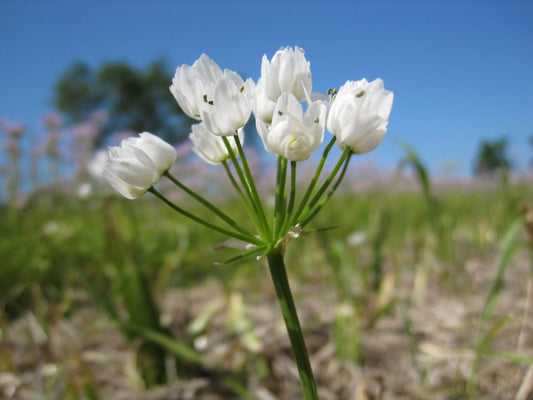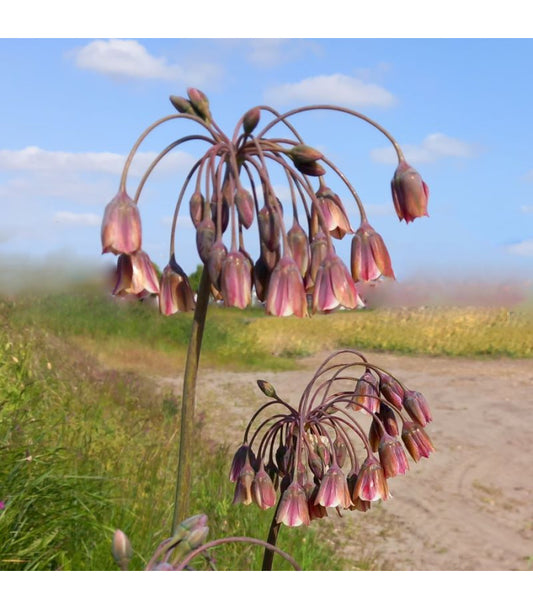Collection: Alliums
Alliums are from the same family as onions, leeks and chives. In ornamental onions, the flower usually develops later than the leaf. In some species, the leaf is no longer as beautiful as the flower develops. For this reason, Allium Gladiator and Allium Mount Everest are best placed behind low or medium-tall perennials, where the flower then rises above.
Alliums are hardy so can be left in the ground after flowering. Most species multiply quickly; the number on a root ball can become too large. In that case you can dig them up in the summer, store them until autumn and then plant the largest bulbs again.
Allium christophii (syn. A. albopilosum) is a special case. This species hardly reproduces from the bulb, but it does produce a lot of seed. You can simply drop this seed on the ground when it is ripe. The following spring, minuscule onion plants will then form, from which small balls will emerge at a depth of a few centimeters. It then takes a few years for them to grow into flowering plants.
Alliums like sunny warm positions. They are a favourite source of nectar for bees and bumblebees. All alliums can be used as cut flowers and remain beautiful in the vase for a remarkably long time.
-
Allium Aflatunense 'Purple Sensation'
Regular price From €31,00 EURRegular priceUnit price / per -
Allium spaerocephalon
Regular price From €13,75 EURRegular priceUnit price / per -

 Sold out
Sold outAllium 'Purple Rain'
Regular price From €31,00 EURRegular priceUnit price / per -
Allium 'Violet beauty'
Regular price From €26,75 EURRegular priceUnit price / per -

 Sold out
Sold outAllium Neapolitanum
Regular price From €9,25 EURRegular priceUnit price / per -
Allium moly 'Jeanine'
Regular price From €14,75 EURRegular priceUnit price / per -
Allium Cowanii
Regular price From €13,00 EURRegular priceUnit price / per -

 Sold out
Sold outAllium Christophii
Regular price From €37,50 EURRegular priceUnit price / per -
Allium ameloprasum 'Ping Pong'
Regular price From €13,00 EURRegular priceUnit price / per -
 Sold out
Sold outNEW: Allium 'Gladiator'
Regular price From €116,00 EURRegular priceUnit price / per -
 Sold out
Sold outAllium schoenoprasum
Regular price From €13,50 EURRegular priceUnit price / per -
 Sold out
Sold outAllium tuberosum
Regular price From €16,50 EURRegular priceUnit price / per -
Allium Nectorascordum siculum 'Bulgaricum'
Regular price From €26,75 EURRegular priceUnit price / per -
 Sold out
Sold outAllium cepa var. Viviparum
Regular price From €59,50 EURRegular priceUnit price / per -
 Sold out
Sold outAllium Scorodoprasum 'Art'
Regular price From €32,00 EURRegular priceUnit price / per -

 Sold out
Sold outAllium ursinum (wild garlic, edible)
Regular price From €32,00 EURRegular priceUnit price / per -

 Sold out
Sold outAllium 'Schubertii'
Regular price From €129,25 EURRegular priceUnit price / per -

 Sold out
Sold outAllium Nigrum (black garlic)
Regular price From €24,50 EURRegular priceUnit price / per -
 Sold out
Sold outAllium stipitatum 'Mount Everest'
Regular price From €44,75 EURRegular priceUnit price / per






























